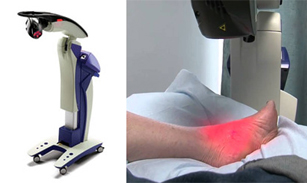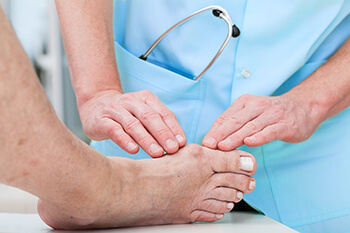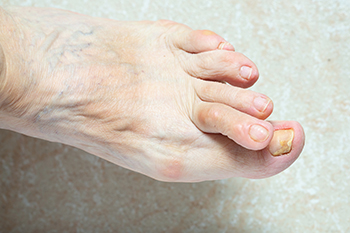 Multiwave Locked System (MLS) Laser Therapy is a laser treatment that uses a combination of wavelengths of light to reduce pain, swelling and inflammation in various parts of the body. MLS Laser Therapy can be used to treat many conditions, including arthritis and arthritic joint pain, Achilles tendon injuries, plantar fasciitis, fractures, gout, and peripheral neuropathy. MLS Laser Therapy treatment is safe, painless, and noninvasive. For some conditions, it may be used as an alternative to prescription medications and surgeries. If you are interested in exploring MLS Laser Therapy as a potential treatment option, please consult with your podiatrist.
Multiwave Locked System (MLS) Laser Therapy is a laser treatment that uses a combination of wavelengths of light to reduce pain, swelling and inflammation in various parts of the body. MLS Laser Therapy can be used to treat many conditions, including arthritis and arthritic joint pain, Achilles tendon injuries, plantar fasciitis, fractures, gout, and peripheral neuropathy. MLS Laser Therapy treatment is safe, painless, and noninvasive. For some conditions, it may be used as an alternative to prescription medications and surgeries. If you are interested in exploring MLS Laser Therapy as a potential treatment option, please consult with your podiatrist.
MLS Laser Therapy is a successful alternative for treating any pain you may be experiencing related to certain podiatric conditions. If you are interested in MLS Laser Therapy, consult with the podiatrists from Boston Common Podiatry. Our doctors will assess your condition and provide you with quality foot and ankle treatment.
MLS Laser Therapy
Multiwave Locked System (MLS) Laser Therapy is a patented, FDA-cleared technology that helps relieve pain and inflammation from a number of podiatric conditions, including:
- Heel Pain
- Plantar Fasciitis
- Sports Injuries
- Wounds
- Achilles Tendonitis
- Arthritis
- Neuropathy
- Neuromas
MLS Laser Therapy is an ideal alternative to surgery and prescription medication, as it has no negative side effects and encourages accelerated healing. Among its many clinical benefits, MLS Laser Therapy also:
- Reduces swelling due to bruising or inflammation
- Blocks pain
- Reduces formation of scar tissue
- Improves nerve function
If you have any questions, please feel free to contact our office located in Boston, MA . We offer the newest diagnostic and treatment technologies for all your foot care needs.









